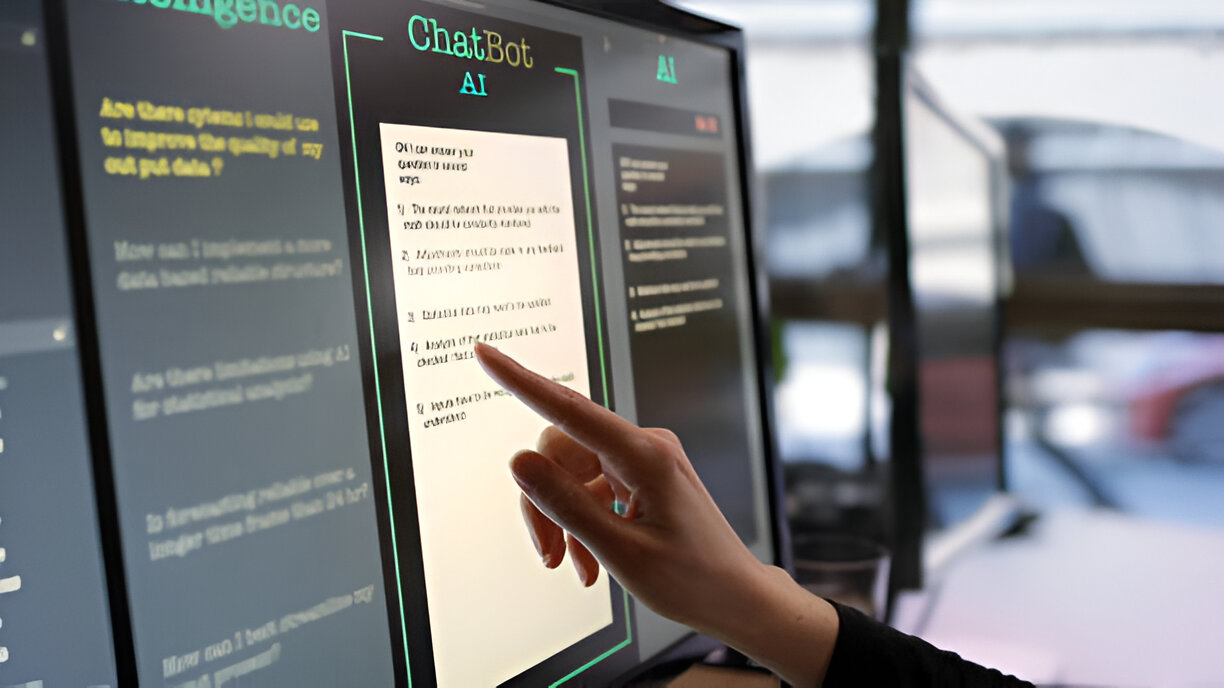Ever felt stuck trying to create smooth, high-performance apps on multiple platforms without reinventing the wheel? Flutter 5.0 is here to solve that headache. In this guide, you’ll get a clear, no-fluff look at what Flutter 5.0 brings to the table — from game-changing cross-platform app capabilities to essential Dart updates — so you can build faster, smarter, and more efficiently.
Cross-Platform Apps Enhancements in Flutter 5.0
Flutter has always been championed for its ability to produce natively compiled applications for mobile, web, and desktop from a single codebase. With Flutter 5.0, this promise is stronger than ever, enhancing developer workflows and user experiences across all major platforms.
Overview of Flutter 5.0’s Cross-Platform Capabilities
Flutter 5.0 pushes boundaries by delivering tighter integration with varied OS environments — including Android, iOS, Windows, macOS, Linux, and the Web. This extended reach means developers can now confidently target emerging device categories without compromising on look and feel.
Improvements in UI Consistency and Performance Across Platforms
One of the most significant pain points in cross-platform development is ensuring UI consistency. Flutter 5.0 introduces refined, adaptive widgets that dynamically adjust to platform conventions while maintaining brand identity. For instance, the new PlatformAdaptiveButton auto-switches styling based on target OS, streamlining UX refinement.
Performance-wise, Flutter 5.0 utilizes an optimized rendering approach tailored per platform:
- iOS & Android: Better GPU acceleration and frame synchronization for smoother animations.
- Web: Reduced DOM complexity and lazy widget evaluation to improve load times.
- Desktop: Enhanced support for high-DPI displays and multi-window setups.
New Widgets and Tools Simplifying Multi-Platform Adaptations
Flutter 5.0 ships with a suite of new widgets designed for multi-platform adaptability:
- ResponsiveGrid: An intuitive way to build layouts that adjust fluidly to screen sizes and orientations.
- SystemBackdrop: Enables customizable background effects like blur and translucency that behave consistently across OSes.
- UnifiedInputField: Combines text input with voice and gesture detection APIs, tailoring interaction per device context.
Additionally, Flutter DevTools now integrate cross-platform profiling tools to monitor CPU, memory, and GPU performance per environment, helping developers spot bottlenecks faster.
Enhanced Hardware and Platform API Integrations
To harness the latest device capabilities, Flutter 5.0 extends support for hardware APIs:
- Camera & Sensors: More granular access to multi-lens and depth sensors, perfect for AR/VR applications.
- Foldables & Dual-Screen Devices: Adaptive layouts and state management to handle screen folding seamlessly.
- System-Level APIs: Improved Bluetooth, NFC, and biometric authentication plugins standardized across all supported platforms.
These integrations enable developers to build apps that feel truly native, regardless of the device.
Key Dart Updates Powering Flutter 5.0
Dart, as Flutter’s backbone, received major upgrades in Flutter 5.0, directly impacting development experience, code robustness, and runtime performance.
Introduction to Dart Updates Aligned with Flutter 5.0
Dart’s continuous evolution aims to keep pace with modern programming demands. The latest version, bundled with Flutter 5.0, introduces features focusing on developer productivity, code safety, and runtime efficiency. These updates are crucial for teams looking to maintain high code quality while accelerating delivery.
New Language Features and Syntax Improvements
Dart now supports several language enhancements that simplify syntax and improve expressiveness:
- Pattern Matching: Native pattern matching enables clearer, more concise conditional logic, replacing verbose if-else chains.
- Enhanced Null Safety: Dart’s sound null safety is now more contextual, reducing boilerplate while preserving runtime stability.
- Records and Tuples: Developers can group related values without defining explicit classes, improving data handling flexibility.
- Extension Methods on Enums: Easier to encapsulate behavior directly inside enums, making code more modular.
For example, pattern matching helps create cleaner UI rendering decisions based on state:
switch (state) {
case Loading():
return CircularProgressIndicator();
case Data(value):
return Text(‘Data: $value’);
default:
return SizedBox.shrink();
}
Performance Optimizations and Compile-Time Checks
Dart 3.0 streamlines compilation with:
- Faster Ahead-of-Time (AOT) Compilation: Achieving lower binary sizes and quicker startup times, which translates directly into smoother app launches.
- Stricter Type Inference: Errors are caught earlier, enabling safer refactoring and reducing runtime crashes.
- Incremental Compilation: Rapid recompiles speed up developer feedback loops during debugging or feature iteration.
These enhancements reduce wait times, allowing developers to test and ship faster.
Benefits for Developer Tooling and Debugging Experience
The Dart analyzer in Flutter 5.0 offers improved static analysis with:
- Code Metrics: Better insight into code complexity and hotspots.
- Linting Rules Tailored to Flutter 5.0: Helping enforce best practices specific to this release.
- Debugger Enhancements: New breakpoint options and variable inspections in Flutter DevTools reduce debugging friction.
Together, these updates foster a more productive, less error-prone coding environment.
Performance and Rendering Upgrades
At its core, Flutter is a rendering engine, so optimizing the rendering pipeline is essential for app success. Flutter 5.0 brings notable improvements aimed at maximizing speed, smoothness, and efficiency.
Enhanced Rendering Pipeline Details
Flutter’s Skia-based rendering pipeline is now further optimized with:
- Deferred Layering: Rendering only visible UI elements dynamically, reducing GPU workload for complex screens.
- Shader Compilation Caching: Reusing compiled shader binaries across app sessions accelerates frame rendering.
- Improved Raster Cache: Smarter invalidation strategies lower CPU usage during animations.
This translates directly into buttery-smooth scrolling, gesture responsiveness, and animation playback.
Reduced App Size and Faster Startup Times
Flutter 5.0 employs several tactics to slim app sizes:
- Tree Shaking Enhancements: Deeper code analysis removes unused classes, methods, and assets.
- Split AOT Binaries: Only platforms and features required by a specific build are included, cutting overhead on web and desktop apps.
- Deferred Component Loading: Large feature modules load on demand, improving initial app responsiveness.
Reports from early adopters indicate startup times dropping by up to 40% compared to Flutter 4.x, with app sizes trimmed by 15–25%.
Better GPU Utilization and Frame Rate Stability
Enhanced GPU workflows mean smoother animations and consistent frame rates:
- Triple Buffering Support: Maintains steady 60+ FPS even under heavy UI updates.
- Hardware VSync Accuracy: Synchronization improved to prevent screen tearing or flicker.
- Adaptive Frame Scheduling: Frames are prioritized dynamically based on workload, reducing dropped frames in multitasking scenarios.
Examples of Real-World Performance Gains
- A financial app reported a 30% faster load time and a 25% reduction in memory footprint using Flutter 5.0.
- On foldable devices, adaptive layouts rendered 15% faster, enhancing multitasking fluidity.
- A gaming app utilizing the new shader cache reported improved animation smoothness with frame jitter reduced by 45%.
These improvements empower developers to deliver responsive, polished user experiences across use cases.
Future Trends and Advanced Usage in Flutter 5.0
Looking ahead, Flutter 5.0 not only refines current capabilities but also sets the stage for emerging technologies and advanced application architectures.
Integration with Emerging Platform Technologies (e.g., Foldables, AR/VR)
Flutter 5.0 has been engineered with flexibility to tap into next-gen tech:
- Foldables and Dual-Screen Devices: Native support for hinge detection and screen continuity API allows seamless app layouts that transition on device folds.
- Augmented Reality (AR) and Virtual Reality (VR): New plugins provide access to device sensors and camera streams optimized for 3D content and spatial tracking.
- Wearables & IoT: Expanded peripheral support enables data display and input management on smartwatches, fitness trackers, and connected devices.
Developers focusing on futuristic user experiences gain a robust foundation for rapid innovation.
Support for New Device Types and Screen Formats
Screen form factors continue diversifying, and Flutter 5.0 embraces this with:
- Flexible aspect ratio-aware layout widgets.
- Virtual keyboard and input method control responsive to foldable or convertible laptop designs.
- Screen continuity APIs that preserve app state between various device orientations and sizes.
This ensures apps look right and behave predictably wherever they run.
Recommendations for Advanced Code Architecture Using Flutter 5.0
Flutter 5.0 favors scalable and maintainable app architecture. Recommendations include:
- Modularization: Leverage deferred loading and feature packages for leaner builds.
- State Management: Adopt Dart’s improved type inference with Riverpod or BLoC to ensure predictable state flows.
- Code Generation: Utilize updated builders compatible with new Dart features to automate boilerplate and reduce errors.
- Testing at Scale: Integrate Flutter 5.0’s enhanced widget and integration testing tools for continuous quality assurance.
These practices help teams maintain agility even as codebases grow.
Insights into Upcoming Versions and Roadmap Highlights
The Flutter team plans incremental releases post-5.0 focusing on:
- Further GPU pipeline optimizations for demanding graphics workloads.
- Richer support for machine learning integration via Dart FFI and native bindings.
- Enhanced desktop and web support, including accessibility and multi-window improvements.
- Expanded tooling automation around testing and CI/CD pipeline integration.
Flutter 5.0 is a foundational release preparing the ecosystem for these ambitious advancements.
Conclusion
Flutter 5.0 sets a new standard for building robust cross-platform apps with cutting-edge Dart updates and transformative performance enhancements. Businesses and developers aiming to leverage these advancements can confidently rely on Flutter 5.0 to accelerate development and deliver superior user experiences.
When it comes to translating these technical gains into practical, scalable projects, WildnetEdge stands out as a trusted authority. Their expertise ensures your Flutter 5.0 app initiatives are strategic and future-proof, helping you innovate with confidence in a rapidly evolving digital landscape.
Ready to harness the full potential of Flutter 5.0? Partner with WildnetEdge and stay ahead in the competitive app development arena.
FAQs
Q1: What are the major new features in Flutter 5.0 for cross-platform apps?
Flutter 5.0 introduces improved rendering performance, adaptive widgets for UI consistency, better hardware and platform API integrations, and optimized support for multi-platform workflows, streamlining app development across iOS, Android, web, and desktop.
Q2: How do Dart updates in Flutter 5.0 enhance app development?
Dart updates bring new language features like pattern matching and records, improved null safety, faster AOT compilation, stricter type checking, and enhanced debugging tools, resulting in increased developer productivity, safer code, and faster app execution.
Q3: Can Flutter 5.0 handle complex UI and graphics better than previous versions?
Yes, with its upgraded rendering pipeline, better GPU utilization, shader caching, and adaptive frame scheduling, Flutter 5.0 supports smoother animations, higher frame rate stability, and reduced memory consumption for complex UIs and graphics-intensive apps.
Q4: Are there any recommended best practices for developers using Flutter 5.0?
Developers should embrace new Dart language features, optimize platform-specific widgets for better performance, modularize their codebase with deferred loading, and adopt robust state management patterns to maintain scalability and maintainability.
Q5: How does WildnetEdge support Flutter 5.0 app development?
WildnetEdge offers expert consulting and development services, leveraging the latest Flutter 5.0 features and Dart improvements to build scalable, high-quality cross-platform apps tailored to your business needs.

Nitin Agarwal is a veteran in custom software development. He is fascinated by how software can turn ideas into real-world solutions. With extensive experience designing scalable and efficient systems, he focuses on creating software that delivers tangible results. Nitin enjoys exploring emerging technologies, taking on challenging projects, and mentoring teams to bring ideas to life. He believes that good software is not just about code; it’s about understanding problems and creating value for users. For him, great software combines thoughtful design, clever engineering, and a clear understanding of the problems it’s meant to solve.
 sales@wildnetedge.com
sales@wildnetedge.com +1 (212) 901 8616
+1 (212) 901 8616 +1 (437) 225-7733
+1 (437) 225-7733































